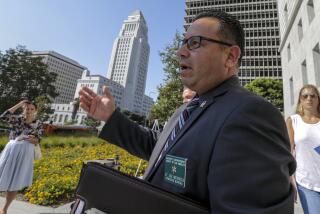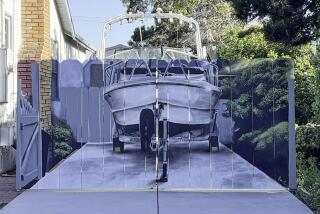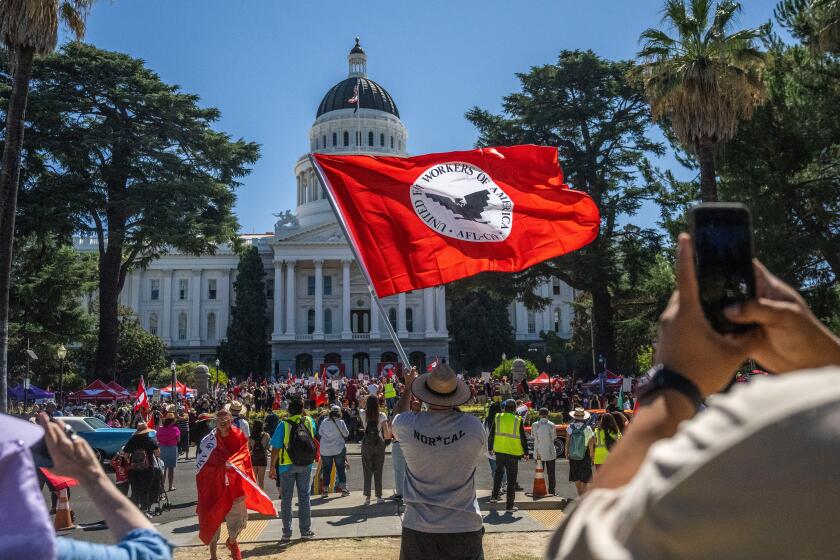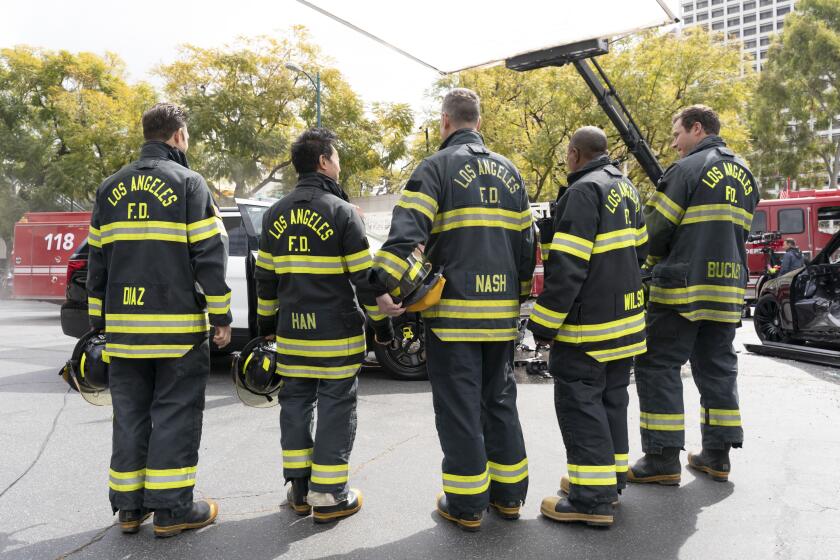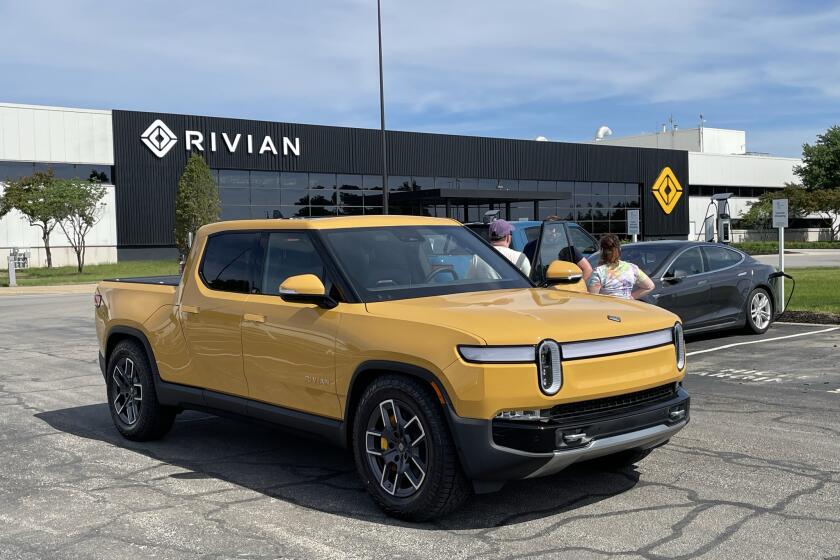COUNTY REPORT. Coming of Age : East Gains Population, Clout
The population tops 100,000. Crime is up. Smog is the worst in the county. Traffic is more of a problem than ever before. And the people of Simi Valley are starting to worry.
The city that once lured new residents by the thousands with the promise of a better quality of life now sees itself threatened by the sheer number of families who bought into the dream.
And the irony, according to city officials and an increasingly vocal number of Simi Valley residents, is that the greatest challenge before them is maintaining the quality of life that attracted all the urban refugees in the first place.
“There is no question there is a lot of noise lately” about development, Mayor Greg Stratton said. “I think the council has to understand that most people’s No. 1 value is their back yard.”
Eileen Gordon, who moved to Simi Valley to escape the ever-increasing traffic, pollution and crime of Los Angeles County, is one of a new breed of community activists campaigning for tighter controls over future growth.
“The time to act is now,” Gordon said. “I don’t want to become another San Fernando Valley. The decisions the city makes now are irreversible. They are permanent. These things can’t be taken back.”
Gordon and her husband, John, are typical of thousands of others. They left their home in the San Fernando Valley and settled in Simi Valley five years ago after looking at houses in Santa Clarita and Valencia.
“I wanted a place where we could take a walk at night and feel safe,” she said. “That’s why we moved here.”
It is a familiar sentiment that has been echoed over the years by thousands of “San Fernando Valley refugees,” as they are called by longtime Simi Valley residents.
In the 1960s and early ‘70s, they came primarily for the inexpensive housing that was quickly replacing citrus groves and horse ranches. More recently, they have come in search of better schools, safer neighborhoods and cleaner air.
And despite the fact that the city’s population has grown from 8,000 to 100,217 in the past three decades and that the median price of a house is now $233,000, they still come.
But Gordon and others fear that Simi Valley is slowly becoming more like the overdeveloped and problem-plagued cities and neighborhoods they left behind in Los Angeles and Orange counties.
They point to the obvious signs: more traffic congestion on neighborhood streets, more pollution in a city already choking with the worst air quality in the county, and more crime and gang activity.
The city’s overall crime rate increased by 13.5% in 1991. But the single biggest jump in crime was in vandalism and gang-related incidents involving tire-slashings, vehicle break-ins and graffiti, which increased by 52.5%.
The sudden surge in gang activity prompted both Simi Valley and Moorpark, its smaller but rapidly growing neighbor, to form citizen groups to help law enforcement officials in their efforts to head off the problem.
But Simi Valley residents are also organizing to get hold of what they feel is the real problem--too much development. To protect their neighborhoods and their quality of life, they are becoming more active in city politics and homeowner groups.
“I felt I had to get involved,” said Wendy Young, an eight-year resident who recently started attending City Council meetings to protest development that she feels is encroaching on her neighborhood.
“I was born and raised in North Hollywood, so I’ve seen a lot of changes,” she said. “I used to walk to elementary school, and I remember walking past orange groves and big farms. Now all of that is gone.”
Shirley Israel, who moved to Simi Valley from Hawthorne in July, recently found herself alongside Young and about 100 other residents at City Hall protesting a McDonald’s restaurant proposed for their Indian Hills neighborhood.
“I think it’s grown enough,” Israel said of the city. “I lived in a very congested part of South Bay where there was a liquor store and a gas station on every corner. Every speck of land was developed.
“I think you can overdevelop to the point where you kill off the people,” she said. “Los Angeles is perfect proof. It’s a cement city. I will do whatever I need to do to prevent that here.”
Eileen Gordon, one of the organizers of the McDonald’s protest, is a founder of a group called Citizens for a Safe and Scenic Simi Valley. The group lost the battle against a new McDonald’s, but has persuaded the City Council to relocate an outdoor police shooting range that was planned near their Indian Hills neighborhood.
In a surprise move, the City Council also recently appointed one of the group’s members, Bill Souder, to the Planning Commission although the former San Pedro resident had only been living in the city for 18 months.
Despite the council’s actions, Gordon and members of her group say they plan to continue to challenge the city on other development projects. They are already gearing up to oppose a Chevron gas station that is planned to go in next to the McDonald’s at Yosemite Avenue and the Simi Valley Freeway.
“Our goal is to be a large group that focuses on citywide issues,” Gordon said. “We’re primarily concerned with quality of life. The message we want to get across to the city is that we’re here to stay.”
Most of the 40 members of the neighborhood group have moved to the city within the past five to 10 years. Many have come from Los Angeles or Orange counties.
“Maybe that’s why we feel so strongly the way we do,” Gordon said. “We’ve all come from communities where we’ve glimpsed what the future could be like.”
Indeed, city officials acknowledge that Simi Valley faces a major challenge in preserving the city’s quality of life.
The city is constantly under pressure to develop, especially because of the recession, Stratton said, adding that it is imperative that residents become involved if they want to have a say in shaping the city’s future.
“My years on the council tell me that if people are not there to watch what goes on, it is very difficult for government to say no to developers,” he said.
Still, Councilman Bill Davis said residents should be aware that the city has not finished growing. He said population is projected to increase to 137,000 by 2010, when the city is expected to be totally built out.
“It’s not going to be the same 20 years from now,” Davis said. “We’re going to have 35,000 more people in this city. The challenge is to maintain the quality of life we have today.
“In reality, you know you can’t. But you can keep it as close as you can.”
In addition, “these people who think they can come into the city and close the gates behind them, I don’t have a lot of sympathy for them,” he said. “If I felt like they do, they wouldn’t be living here right now.”
Although officials admit that Simi Valley is already suffering from the fallout of development, they say it is unfair to focus all of the blame on growth that has occurred just within the city.
The fact is, they argue, a fair percentage of traffic, crime and even the city’s dirty air comes from outside Simi Valley.
And to some extent, they are right.
Because of prevailing winds from the west, the city gets a steady stream of contaminated air from other parts of the county, particularly Oxnard. The coastal city has the two largest stationary sources of pollution in the county, Southern California Edison’s power plants at Ormond Beach and Mandalay Bay.
Simi Valley officials don’t blame Oxnard for the power plants. But they are riled by the fact that Oxnard is the only municipality in the county without a growth-control ordinance, which Simi Valley officials say only means more smog for their city, which has the worst smog problem in the county.
“I’ve offered my solution to the county about our air pollution problem,” Stratton said. “But leveling Oxnard is not acceptable. Of course, I was just joking.”
Although Simi Valley’s crime rate has continued to rise as the city has grown, Police Chief Paul Miller says it is still manageable and markedly lower than other areas of Ventura County and the San Fernando Valley.
In fact, the FBI has consistently listed Simi Valley as being among the safest communities in the country for its size.
Still, certain crimes, such as auto theft, continue to rise. As of mid-March, 72 vehicles have been reported stolen, a 10% increase over the same period last year.
Police and city officials say Simi Valley has often been a favorite target for car thieves from Los Angeles because the vast majority of local residents can afford to drive expensive vehicles.
“We’ve created some of the problem because we’re wealthy,” Stratton said.
Simi Police Lt. Jon Ainsworth, who is in charge of a two-member gang unit formed last year, said that although Simi Valley has more than 100 gang members, they are not as violent or into drug dealing like their Los Angeles counterparts.
“We’re dealing with first-generation gang members,” whose primary activities are graffiti and vandalism, he said.
Ainsworth credited the city’s strict graffiti abatement program, the new citizens task force and the Police Department’s gang unit for reducing gang activity during the first three months of this year.
But Ainsworth said that although the city appears to have a handle on the gang problem, he does not expect it to go away entirely because of the influence and visibility of large street gangs in Los Angeles.
“It’s going to remain,” he said. “The question is to what degree.”
Increasing traffic congestion is another problem for the city. While Simi Valley generates much of its own congestion, officials say the problem is compounded by Thousand Oaks and Moorpark commuters who scramble through town each day on their way to the Simi Valley Freeway.
They said some of the traffic on surface streets at the city’s west end will be alleviated when the connector for the Simi Valley and Moorpark freeways is completed in mid-1994.
Bill Golubics, the city’s traffic engineer, said the city’s busiest intersection--Los Angeles Avenue and Madera Road, now used by motorists from Thousand Oaks and Moorpark--will be the primary beneficiary of the connector.
Golubics said the intersection now handles more than 65,000 vehicle trips a day and that once the connector is completed, that number is expected to drop by 10% to 15%.
“That’s very significant,” he said. “That will help all of us.”
But traffic on other busy streets in the city is not expected to change much. And the connector, Golubics said, will just mean more traffic on the rush-hour-clogged Simi Valley Freeway.
He said it is still too early to tell what effect, if any, the new commuter train that will link Simi Valley and Moorpark to downtown Los Angeles beginning in October will have on freeway traffic.
Meanwhile, Simi Valley officials are watching closely as the city of Moorpark, which grew at a record rate during the 1980s, grapples over its future.
For the past two months, the Moorpark City Council has been conducting hearings on proposed General Plan amendments that could significantly increase the size of the city and double its present housing stock, which now includes more than 7,000 homes. The city’s population is at 25,494, according to 1990 census figures.
The Irvine-based Messenger Investment Co. has proposed the largest development: 4,800 homes on more than 4,000 acres in the rolling hills northeast of the city limits.
The vast majority of letters and testimony received by the council from residents has been against the city expanding its boundaries, officials said.
“Whether that represents the real feeling of the man on the street I don’t know,” Mayor Paul W. Lawrason said.
Lawrason said that while he is certain the city will not grow at the rate it did in the 1980s, it will continue to grow. He said the city needs more jobs and revenue from new businesses to pay for city services, which have failed to keep pace with the development that has already occurred.
“Yes, it’s going to happen,” Lawrason said of continued growth. He said the City Council will probably make some decisions next month regarding future development plans.
Whatever the council decides, Lawrason said the city will never become the size of Simi Valley or Thousand Oaks.
“No,” he said. “I think the residents are pretty much together on that.”
More to Read
Start your day right
Sign up for Essential California for news, features and recommendations from the L.A. Times and beyond in your inbox six days a week.
You may occasionally receive promotional content from the Los Angeles Times.
